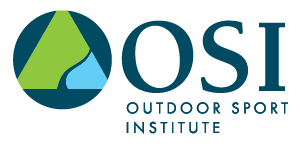Taking a Facilitator First Approach
Seth Hubbard | OSI Coach
Welcome, and thank you all for taking the time to join Team OSI and the Community Coaches Network. As you have seen in the invitations up to this point, we are eager to connect with all of you, and hopefully make it easier for all of you to reach out to one another as well. You will see posts from OSI staff regularly, sharing our own ideas as well as material from other sources that can be helpful in the work you do in your communities.
Whether the focus is on our own personal skill development in an outdoor sport, or the development in our teaching, coaching, and leading skills, we want to help you share the activities you love with others.
To get us started, this post is about sharing ideas on how we structure learning experiences for others in outdoor sport.
It’s easy to think that our role as coaches or program leaders is primarily all about teaching. While teaching the technical details of sport is an important part of the experience, it shouldn’t be the sole focus of our time with participants, of any age. As leaders, coaches, volunteers, and mentors our primary aim should be to facilitate positive experiences that keep participants engaged, and allow them room for discovering their own learning. This helps form the foundation for lifelong participation in outdoor sport.
At OSI we call this a “Facilitator First” approach to coaching. A Facilitator First approach means we view our role first and foremost as being facilitators of experience. We view teaching as conveying information we want people to have. Facilitating is about creating an environment and opportunity for people to learn. We may need to teach things to people we are working with, but that’s often only a very small part of facilitating a positive and successful experience.
Taking a Facilitator First approach includes:
Considering what participants could get from a session beyond specific sport skills; connection to people and place, humility, perseverance through challenge, or simply plain fun.
Thinking about what external influences may impact the experience; personal comfort with activity, group dynamic, weather, equipment, or competitive stress for example.
Knowing what specific tasks, skills, challenges you want to use as tools and drills during an experience and how you want to deliver the material.
Finally, leaving space in the session for participants to discover their own learning. This means not using the entire session to teach material. Instead leaving time for participants to practice what you have just taught, review past skills, and simply enjoy the space and group they are with.
Using this approach while leading and instructing can be a challenge. As teachers and coaches, it is our desire to impart knowledge on participants, however in many cases the most profound learning occurs after our teaching is done and we’ve stepped out of the way. This process helps to create enthusiastic, self-directed, focused participants, who have the confidence to go and experience these activities on their own terms. These are all parts helping to create individuals who will value outdoor sport and help grow that culture in their communities.
Session Planning Considerations
Who:
Who is the audience
What:
What is the activity you are doing?
What do you want them to take away?
What do they want to take away from it? Think of sport specific skills, as well as social and emotional takeaways (humility, connection to outdoors or individuals, decision making, etc)
When:
When is the session, and will that have an impact on the experience?
Where:
Where is the session taking place?
What is the location like?
What do you have available to use?
What may be distractions?
Why:
Why are they doing it?
Keep in mind this is often different than why you want them to be doing it, or why you think they are doing it.
Sample Daily Session Plan:
5 mins – Group intro about the focus of the session
15 mins free movement (warm up games or other type of movement)
10 – 15 mins - dynamic mobility
30 – 45 mins - introducing skills, either technical skill for sport, or specific training goals. (example: teaching students to roll a kayak, V2 on roller skis, wheelie a mtn bike, or how to complete a specific interval session for training)
30 mins - time to explore, play games, practice on their own, students to ask questions as they practice, cool down.
10 mins – Cool down and reflection on what participants took away
Did you provide the opportunity for:
Skills you want to introduce or review?
Opportunity to practice skill with feedback, either from coach, peers, or self-feedback from activity?
Free time to explore the experience and have their own connection?
If you’d like to learn more about this approach hands on, consider joining us at a future OSI Leader Workshop.

